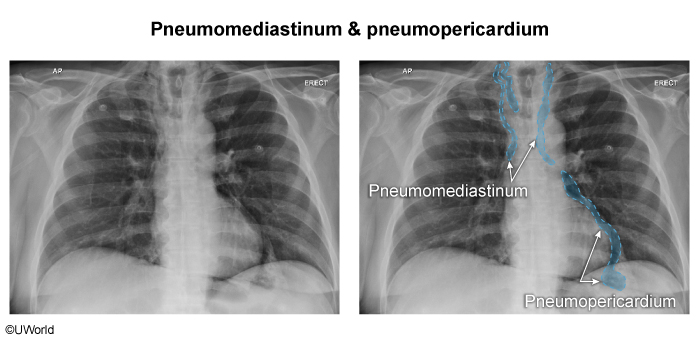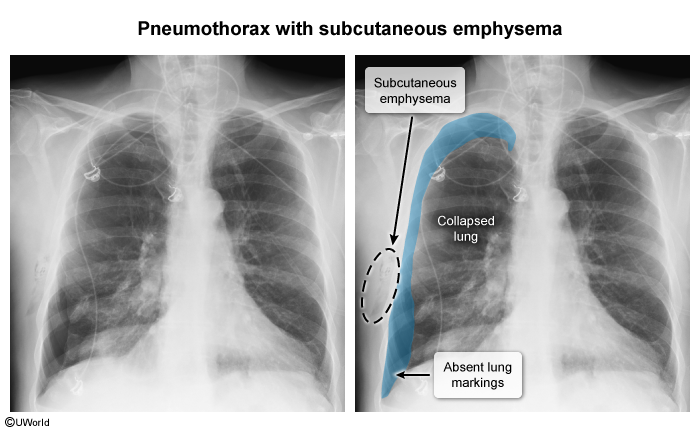Trauma: Penetrating Trauma To The Neck
Article Sections
Introduction
Penetrating trauma to the neck is a high-risk injury due to the concentration of critical structures, including the carotid arteries, jugular veins, trachea, esophagus, and spinal cord. Managing these injuries requires careful evaluation because damage to any of these structures can result in life-threatening complications (eg, massive hemorrhage, airway compromise, neurologic injury). Physical examination findings (eg, hard or soft signs) and advanced imaging determine the appropriate diagnostic and surgical management. The presence of "hard signs" (eg, active bleeding, airway obstruction, expanding hematomas) often necessitates immediate surgical intervention. In contrast, "soft signs" (eg, hoarseness, subcutaneous emphysema) may allow for more conservative management with imaging to assess deeper injury.
Anatomy of the neck
The neck is divided into 3 anatomical zones (Figure 1), with structures of the upper gastrointestinal and airway systems traversing multiple zones. Injuries in these zones can impact multiple systems simultaneously:
Continue Learning with UWorld
Get the full Trauma: Penetrating Trauma To The Neck article plus rich visuals, real-world cases, and in-depth insights from medical experts, all available through the UWorld Medical Library.
Figures
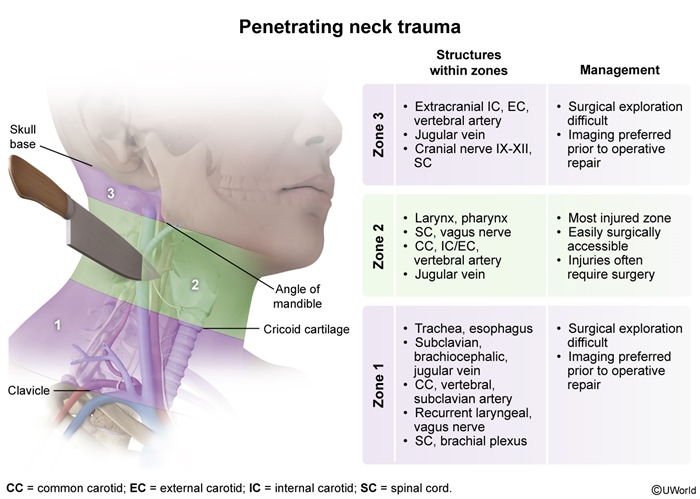
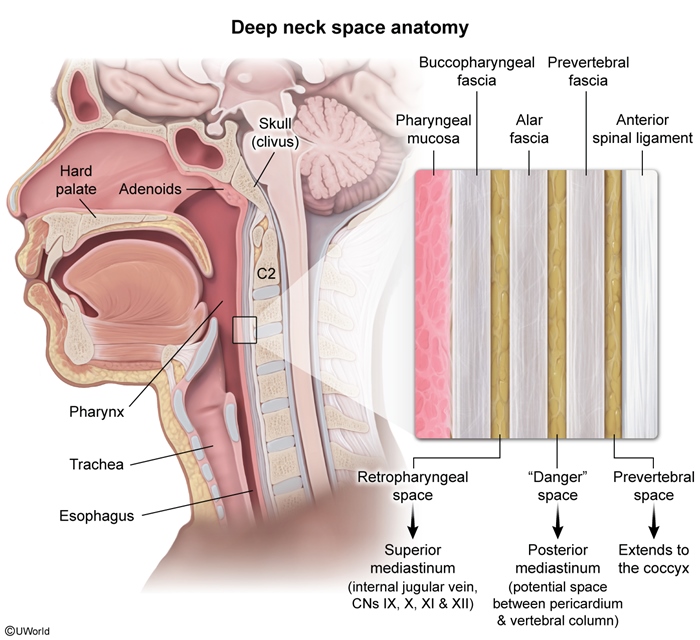
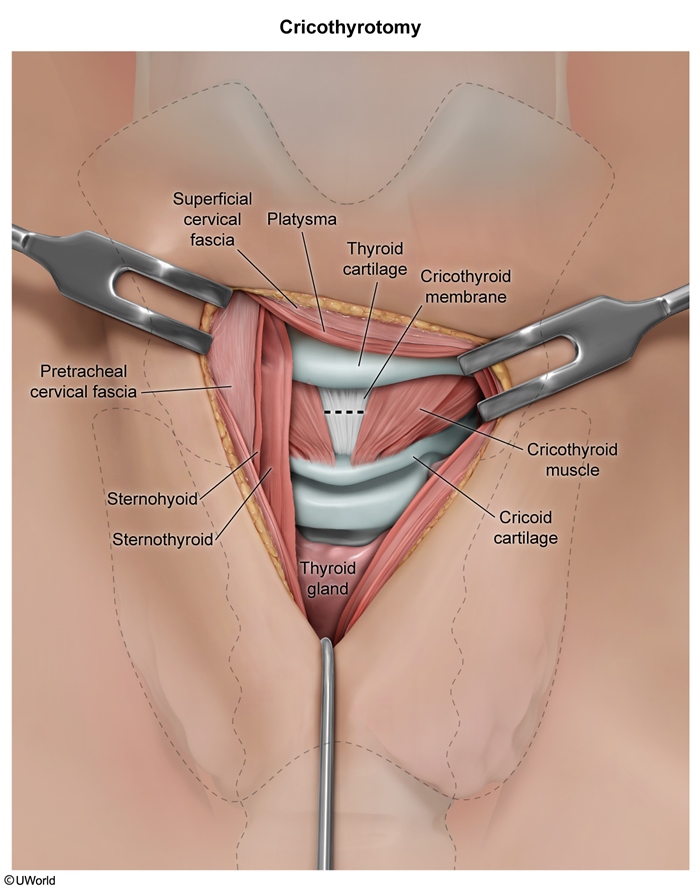
Images
